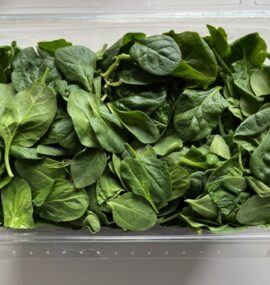Japanese-Americans with long-term, moderate caloric restriction live longer
Experimental studies of different animal species, including rhesus monkeys, show that moderate caloric restriction leads to greater life span. Human studies are another matter. The long life span of humans limits long-term experiments of caloric restriction for practical reasons. Long-term epidemiological studies provide an alternative way to determine if caloric restriction leads to increased life span in humans.
Researchers in Hawaii used data from the Honolulu Heart Program where 1,915 apparently healthy, non-smoking Japanese-American men living in Hawaii were followed for 36 years. Daily energy intake was assessed at baseline from a 24-hour food recall. Daily caloric intake was categorized in quintiles with the middle (third) quintile (2,214 calories per day) serving as the reference for analysis. After adjusting for confounding factors, the lowest risk of mortality occurred in the second quintile of caloric intake (1,882 calories per day), which represented a 15 percent reduction in daily caloric intake compared to the overall average. Severe caloric intake reduction of 50 about percent of the overall group mean showed a significant 31 percent increased risk of death. In spite of the imprecision of the 24-hour diet recall data, moderate caloric restriction may increase longevity, while severe caloric restriction seems to reduce longevity.
Heathy aging with a calorie-restricted diet
Older residents of Okinawa provide a unique example of the life-enhancing benefits of moderate caloric restriction. Craig Willcox and colleagues noted that Okinawan septuagenarians consumed a diet of about 1,785 calories per day, representing an 11 percent reduction in daily caloric intake with relation to their weight and activity level. Caloric restriction in Okinawa occurred from about 1949 until the late 1960s. The traditional Okinawan diet featured green leafy and yellow root vegetables and sweet potatoes as a staple, and soy as the main source of protein, with small amounts of fish and meat and minimal refined sugars and processed foods. This was a healthy calorie restricted diet. Okinawan septuagenarians (both men and women) had longer life expectancy than non-Okinawan Japanese and Americans. Centenarians in Okinawa occurred at 4-5 times the rate of that in industrialized countries. Plus, older Okinawans enjoyed ten years of added disability-free life expectancy compared to typical Western populations—in other words, healthy aging.
Moderate caloric restriction improves markers of aging
Biological aging can be measured in several ways. Researchers applied two different approaches, the Klemera-Doubal Method and the homeostatic dysregulation method, using data from 220 non-obese adults in the National Institute of Aging CALERIE study to determine if caloric restriction led to slower rates of biological aging. In both approaches, biological aging was determined from 10 biomarkers (such HbA1c, systolic blood pressure, and C-reactive protein) analyzed from blood samples. The results from the two different approaches were similar. Over a two year follow-up period, participants in the caloric restriction group showed a significantly slower rate of aging compared to participants in the control group that was advised to continue eating as usual. Interestingly, the differences in rates of biological aging did not depend on weight loss. Participants in the caloric restriction group who reduced their caloric intake by more that 10 percent had a slower but not statistically different rate of aging decline compared to participants who reduced their caloric intake by less than 10 percent. Whether caloric restriction improves markers of aging over longer periods of time remains to be determined.
Different ways to measure the rate of aging
The newly developed discipline of geroscience seeks to extend both health span and lifespan. A key idea is that slowing or reversing molecular-level processes linked to aging can delay or prevent many chronic diseases and extend Quality of Lifespan (aka health span). DNA methylation (chemically adding a methyl group to a DNA nucleotide) is a key adverse molecular process linked to faster aging.
Researchers used data from the CALERIE study to determine if two years of caloric restriction (12 percent on average) slowed the rate of aging as measured with three different approaches based on DNA methylation: 1) DunedinPACE, 2) PheoAge, and 3) GrimAge. DunedinPACE employs data from multiple points over time, while PheoAge and GrimAge rely on data from a single point in time. Dunedin PACE, but not PheoAge and GrimAge, predicted slower rates of aging for people in the caloric restriction group compared to those in the control group over 24 months. While caloric reduction produced a small decline in the rate of aging (2-3 percent), this modest decline could have major effects over large populations.
I love to eat. My ability to eat formerly exceeded my ability to burn up all those calories. My solution? Eat Better. Meaning that I now load up on vegetables and avoid ultra-processed foods. I can feel full eating lots of low-calorie veggies—one pound of fresh spinach in the picture contains a mere 125 calories. I suggest that you find ways to prepare veggies such that you enjoy eating them. That will motivate you to eat more of them.







